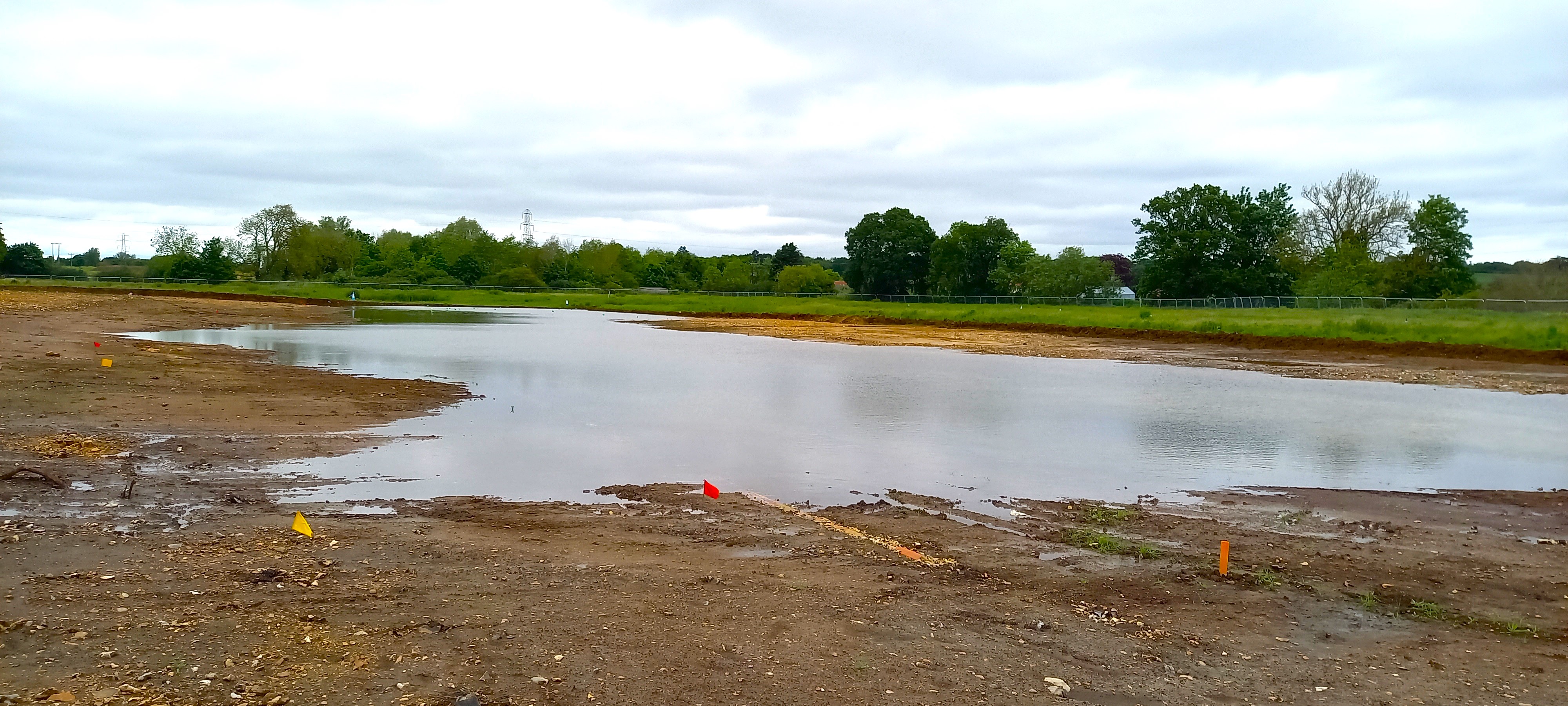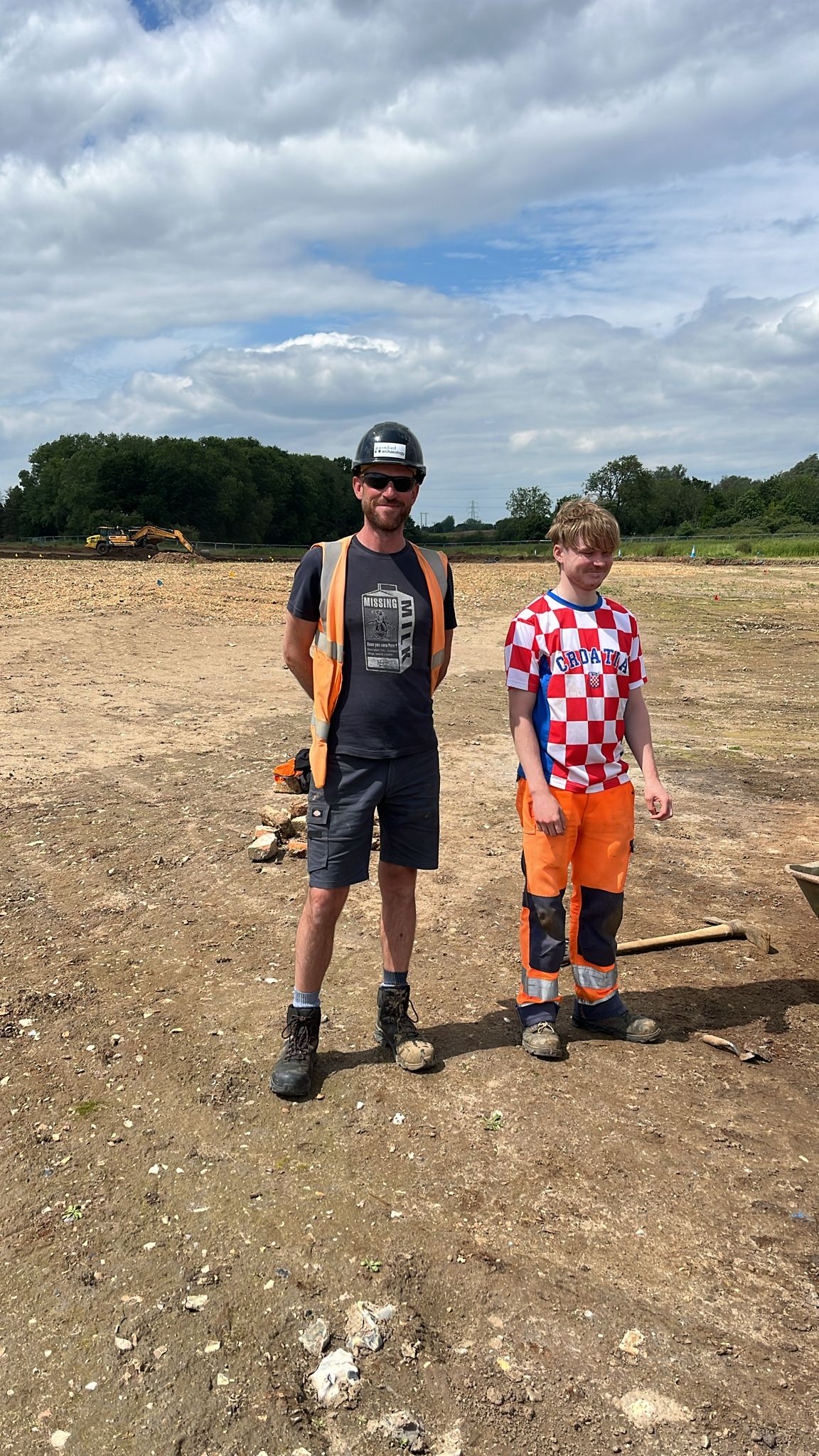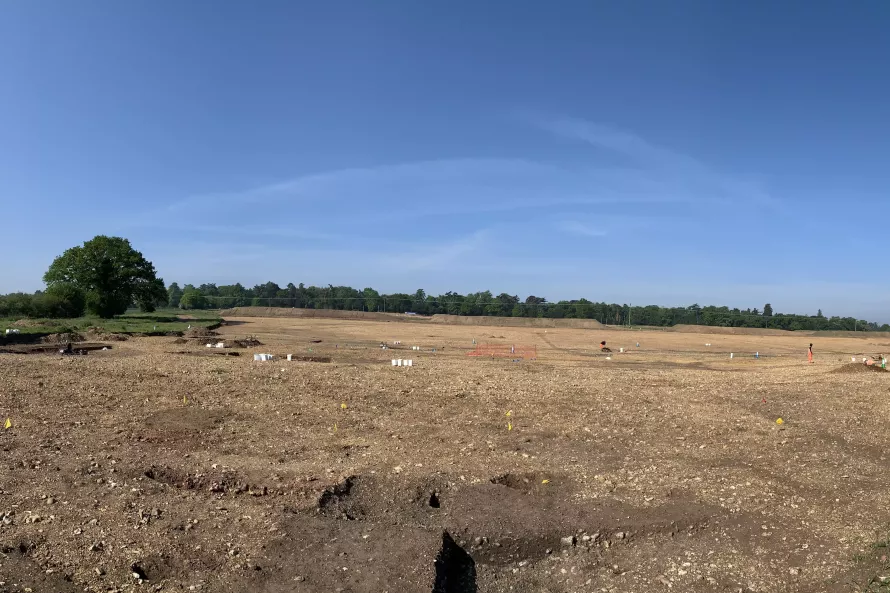To be an archaeologist, you have to love working outside day in day out. And you also need to have a good sense of humour, as that is the only way you’re going to get through a cold, bleak day when the driving rain is hitting you sideways in the face as you shovel mud slop into a wheelbarrow… We started on site back in the middle of January, so the team have had to suffer through one of the wettest winters in quite a considerable amount of time. Thankfully those cold, wet days are (on the whole) a distant memory and it won’t be long before we’re complaining that it’s too hot!
When you work outside every day, it is inevitable that you become a bit obsessed with checking and talking about the weather.
“How is it only 14 degrees today? It’s meant to be June!”
“Why is it raining? The Met Office says it’s supposed to be sunny today.”
One of the hazards of working on a large site like Abbot’s Vale, is that you can often see the rain coming in the distance, but because it’s such a long trek back to the cabin you know you won’t get back in time to escape. So you inevitably stand in the middle of site and accept your fate. (Thankfully, we’re always kitted out in a variety of PPE to deal with the elements.)
Surprise showers aside, we’re very good at planning ahead when it comes to the weather. For example, if we know that lots of rain is coming at the end of the week, the team will focus on hand excavation for a few days and save up all their paperwork so that they can spend the rainy day in the cabin filling out context sheets (…and eating biscuits).

Combined with digital recording systems, our context sheets are an important tool for capturing data about archaeological features (such as measurements and soil composition), as well as the team's early interpretations and perspectives.
As part of our archaeological work in Area 3, we’re going to be investigating a palaeochannel. A palaeochannel is an old river or stream which is no longer active. They are interesting to us because they potentially contain lots of information about the past environment - we’re hoping to be able to discover whether this was an active stream during the Anglo-Saxon period and what sorts of flora and fauna were growing in the immediate area at that time. Old rivers are also good because if they still have a certain amount of water still sat in them, then there’s the potential for uncovering preserved wood. Which would be very exciting!
We were planning on investigating the palaeochannel last week… but the weather had other ideas. About a month’s worth of rain fell on site in the space of 24hrs, turning our palaeochannel into a rather large lake. The amount of water has been so bad that we’ve started attracting wildlife, with a pair of oystercatchers taking residence in the flood.

The palaeochannel full of water once again.
It’s not all rain and gloom on site though. The British weather is notoriously changeable and in the last few days some of the team have decided that it’s time to get the shorts out and start working on their ‘archaeologist’s tan’. An archaeologist is easily identifiable during the summer months by their impressive tan lines – usually located around the upper arms, the knees, and the base of the back (from bending forward all day digging). No doubt the most stylish one of all is thanks to our safety boots…the classic above the ankle, which makes wearing flipflops a bit of an issue!

Neal and Will demonstrate their 'summer wear'.




